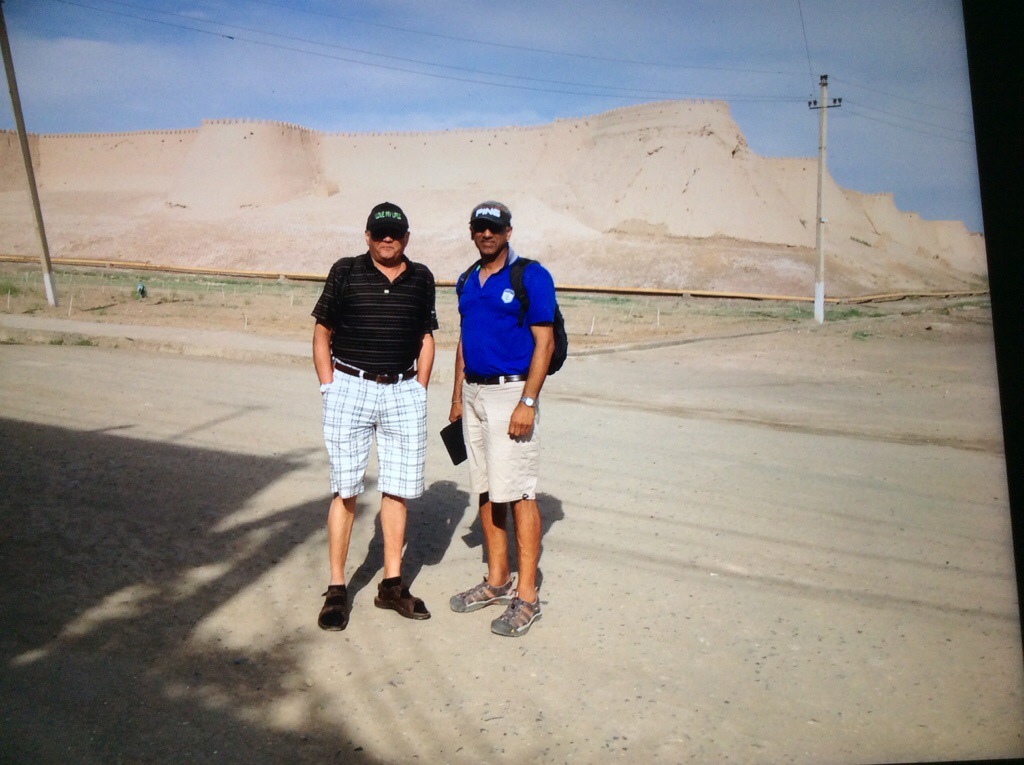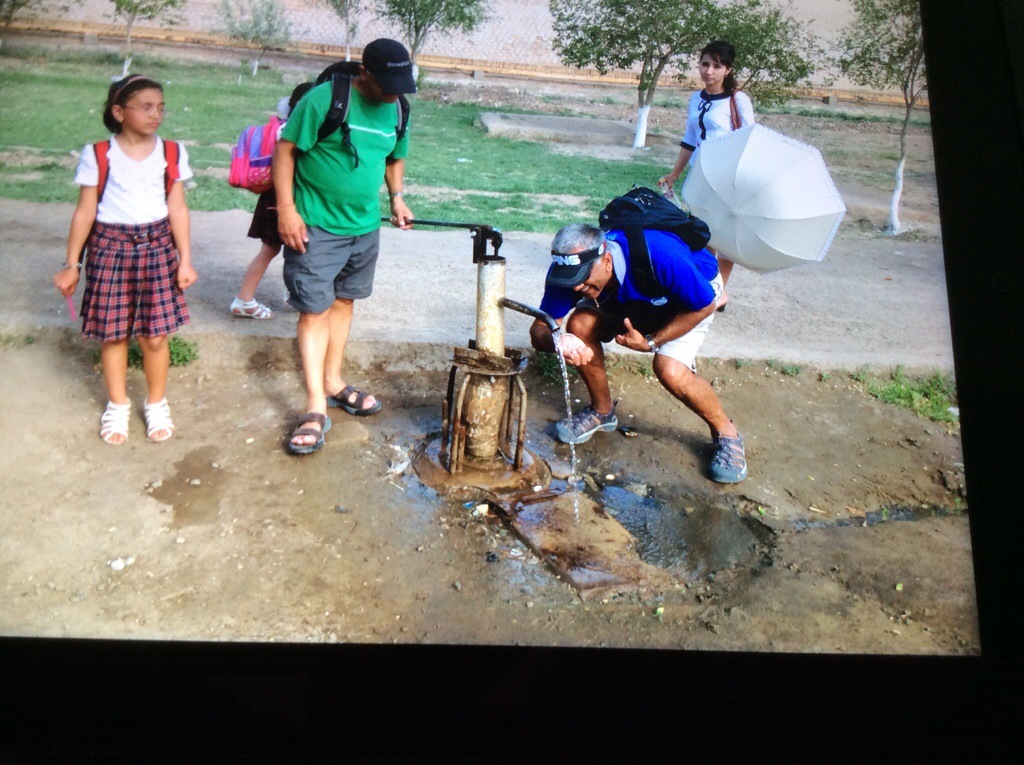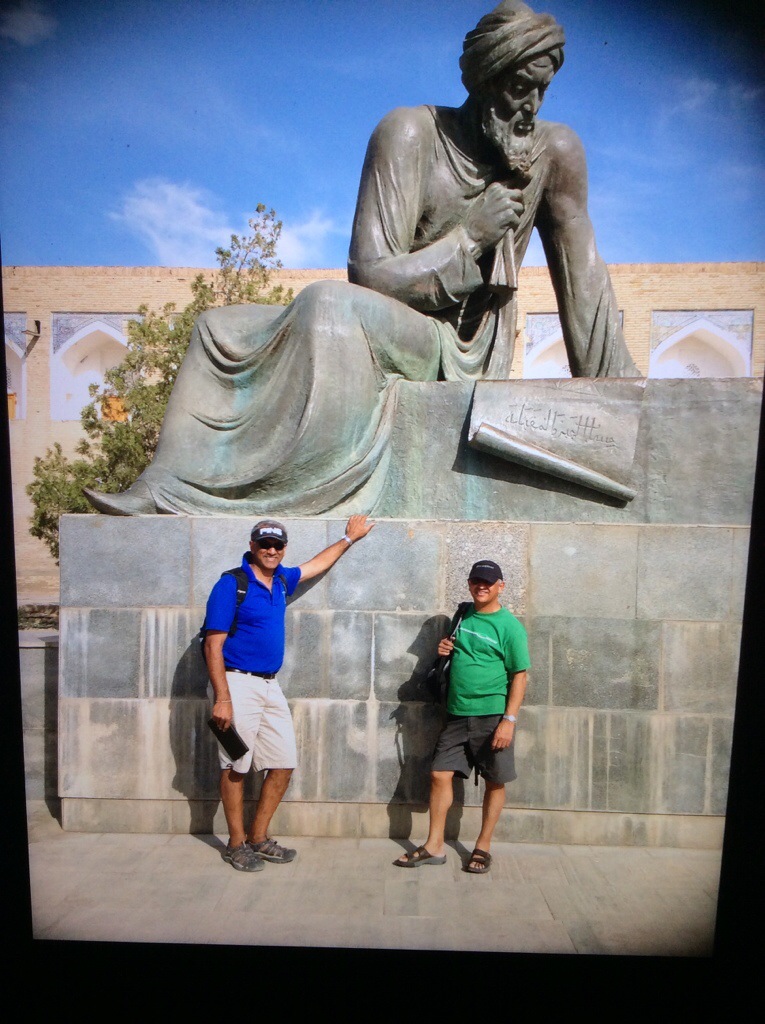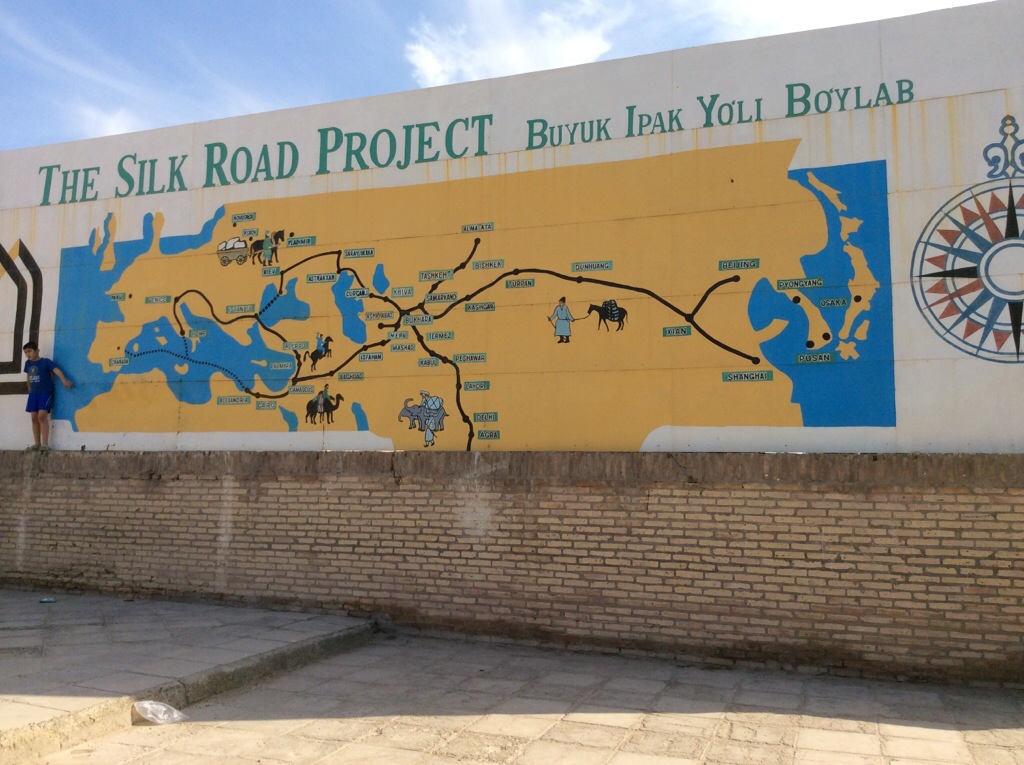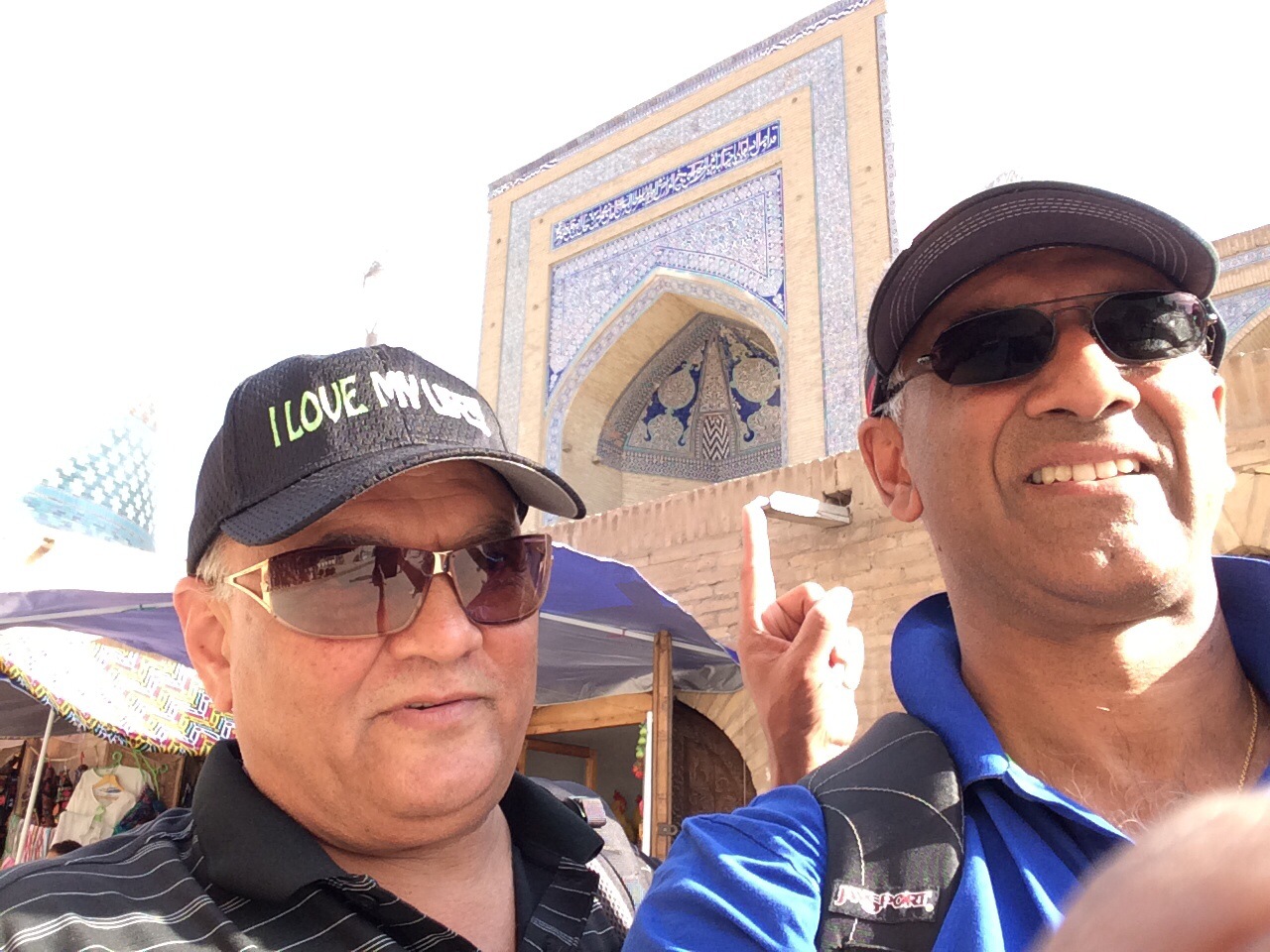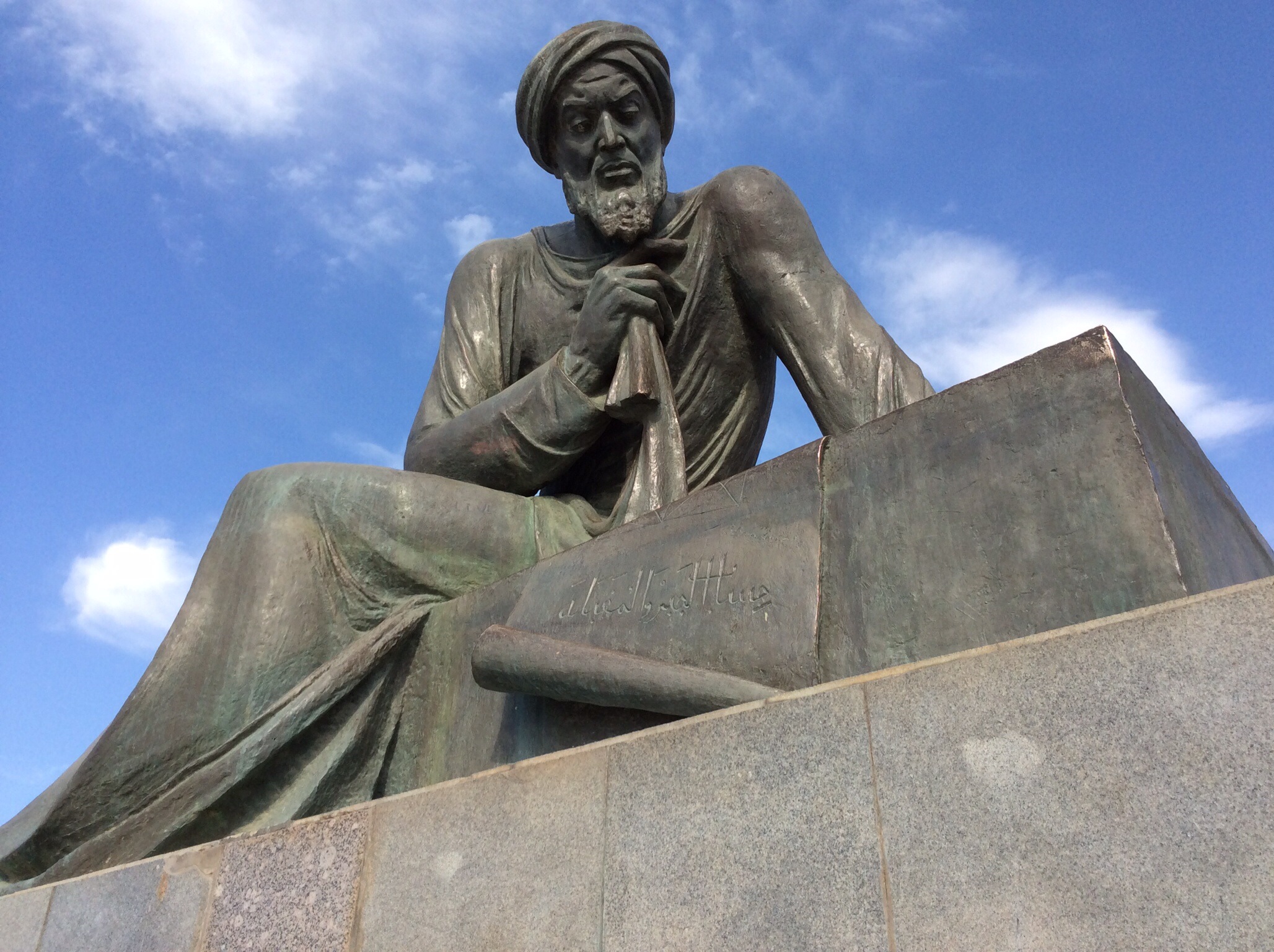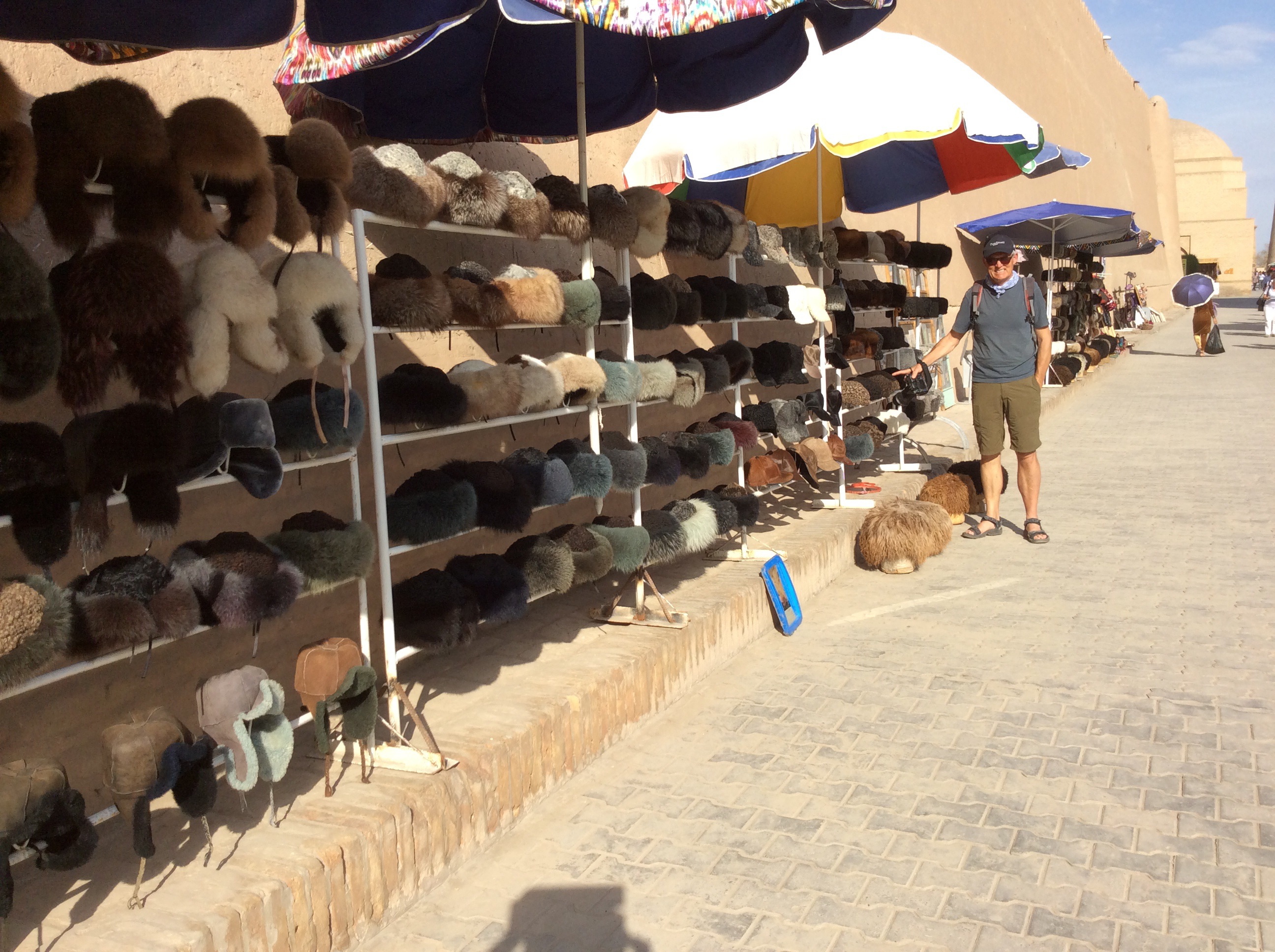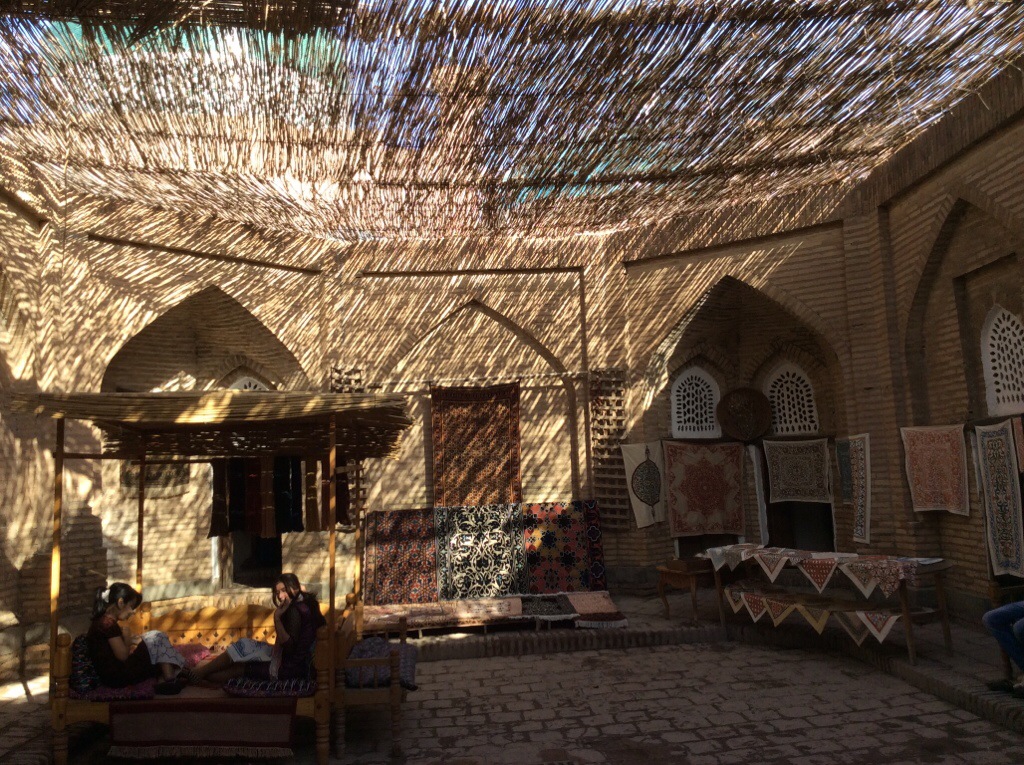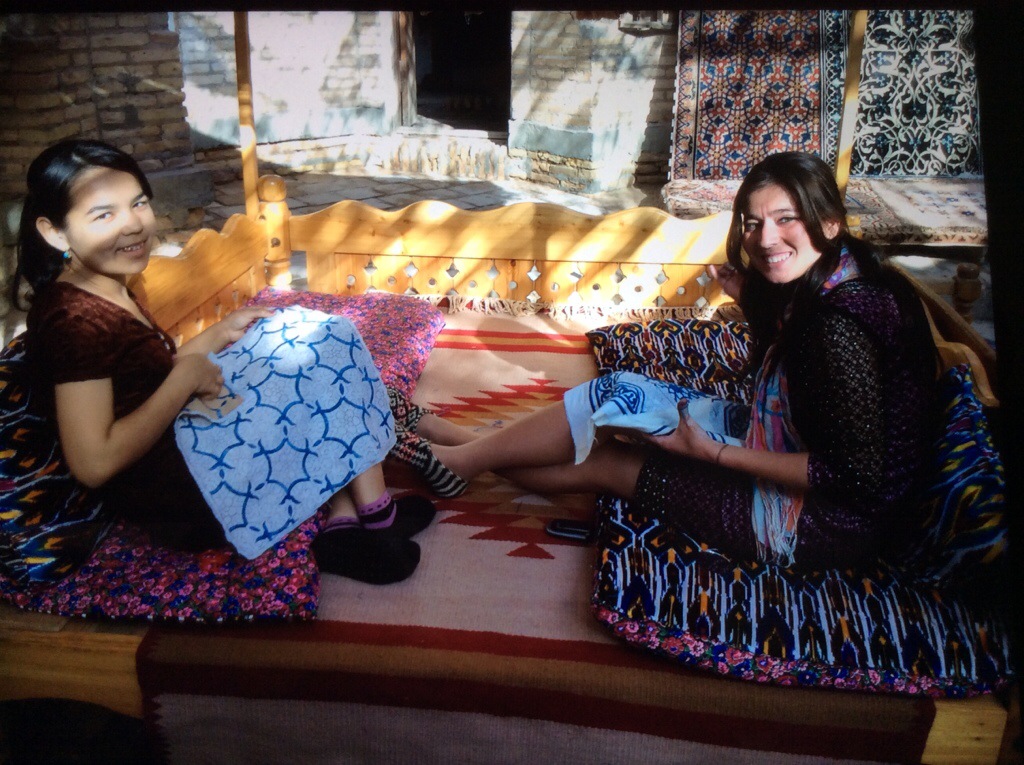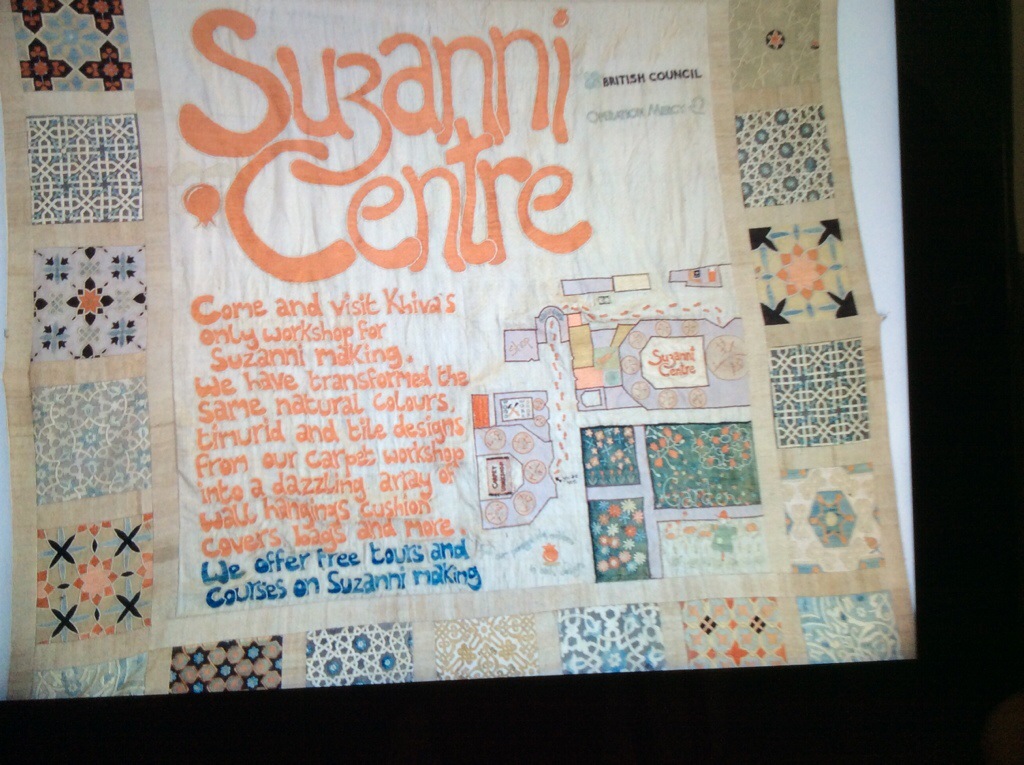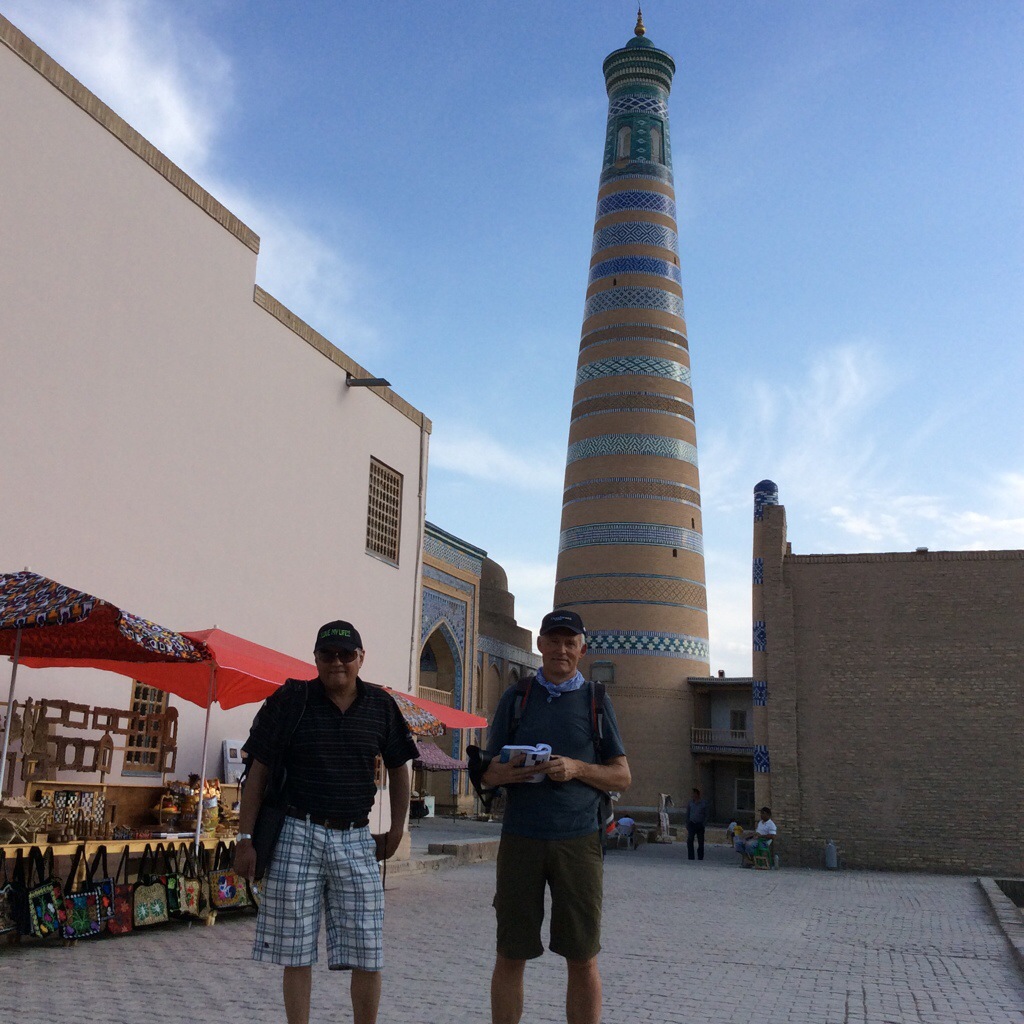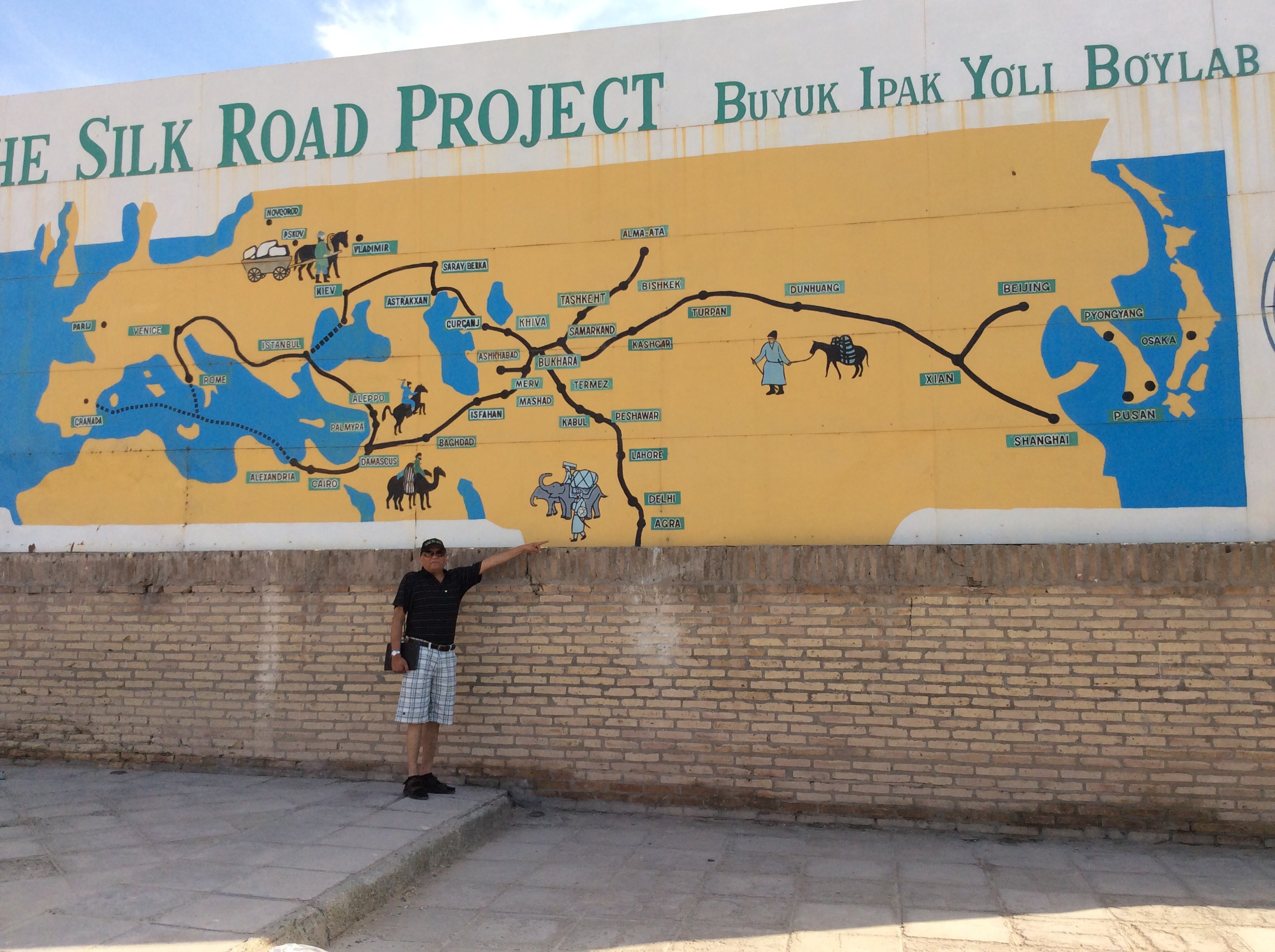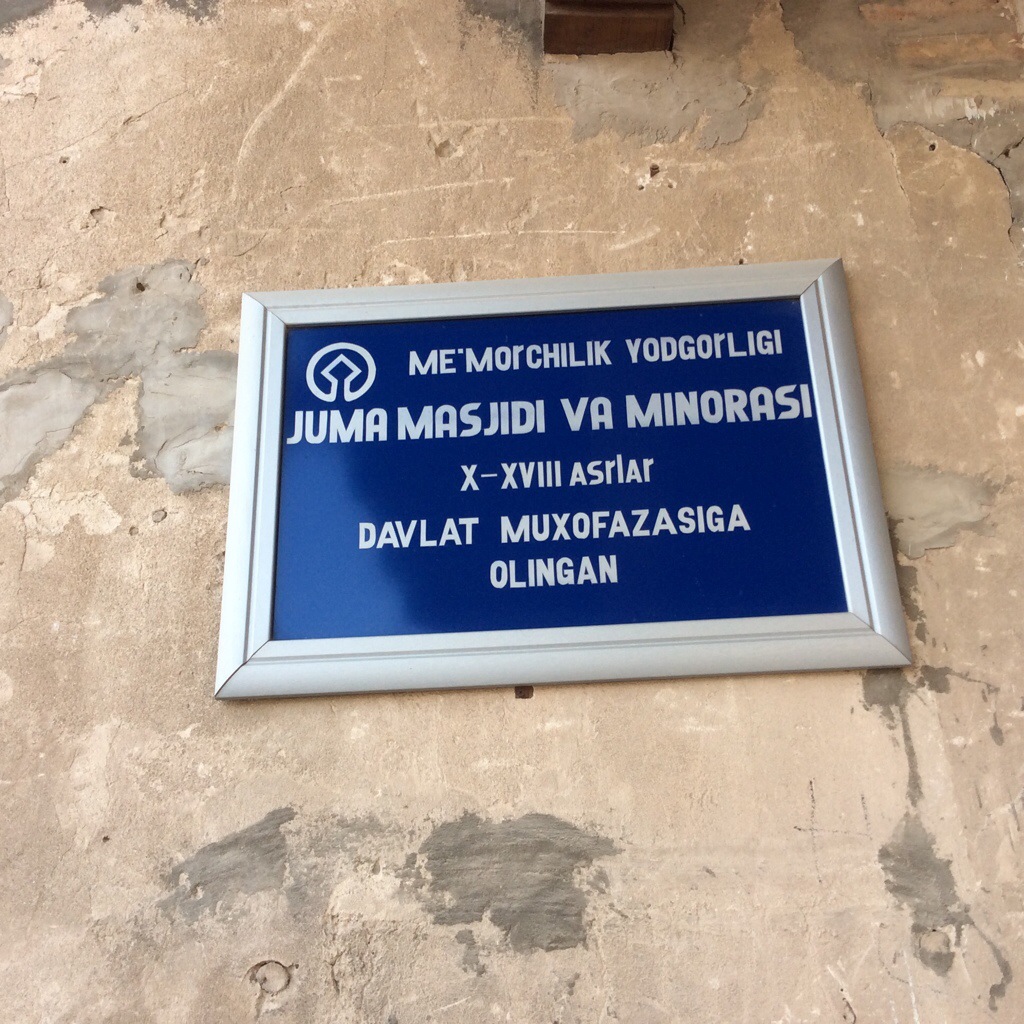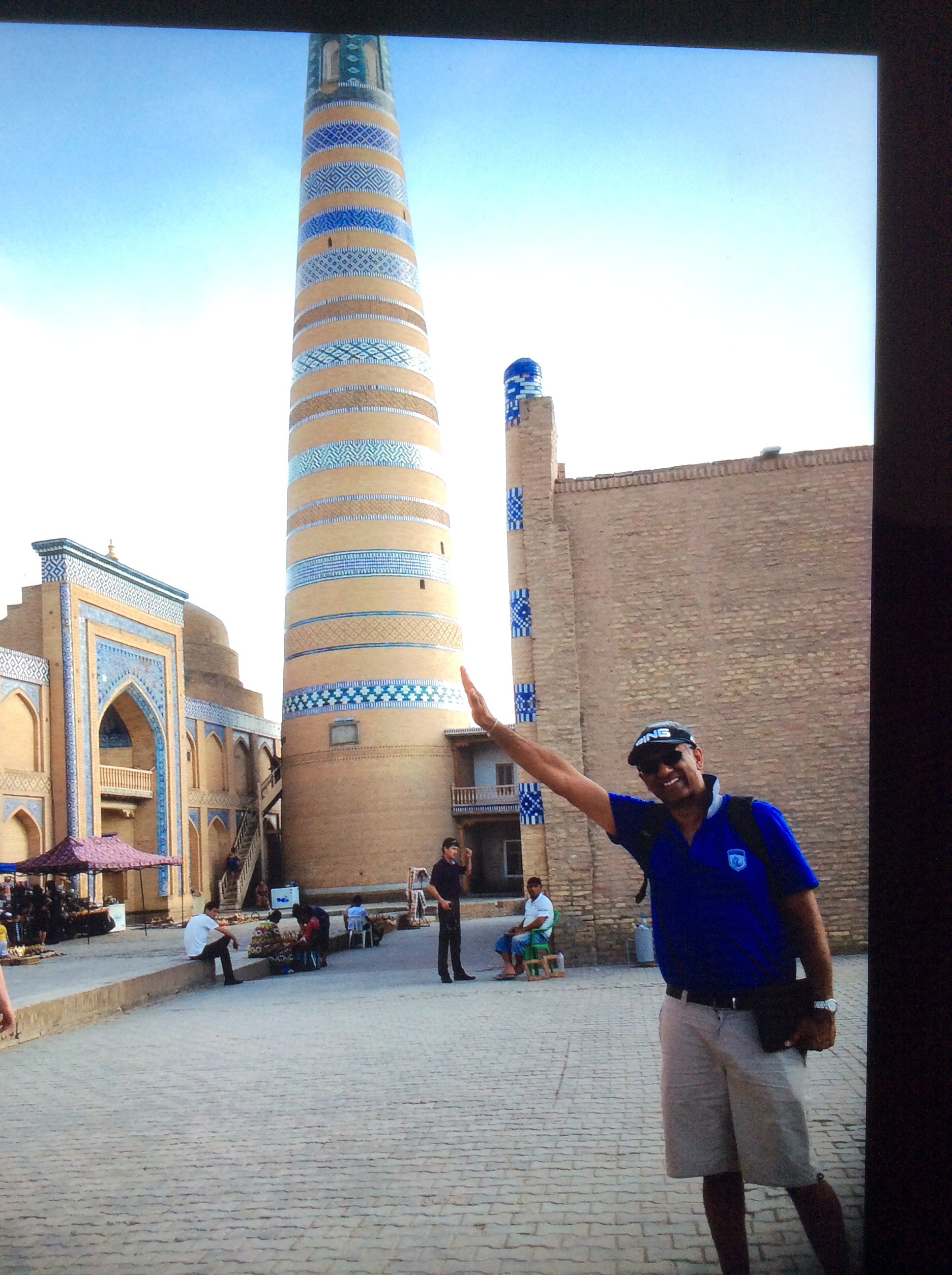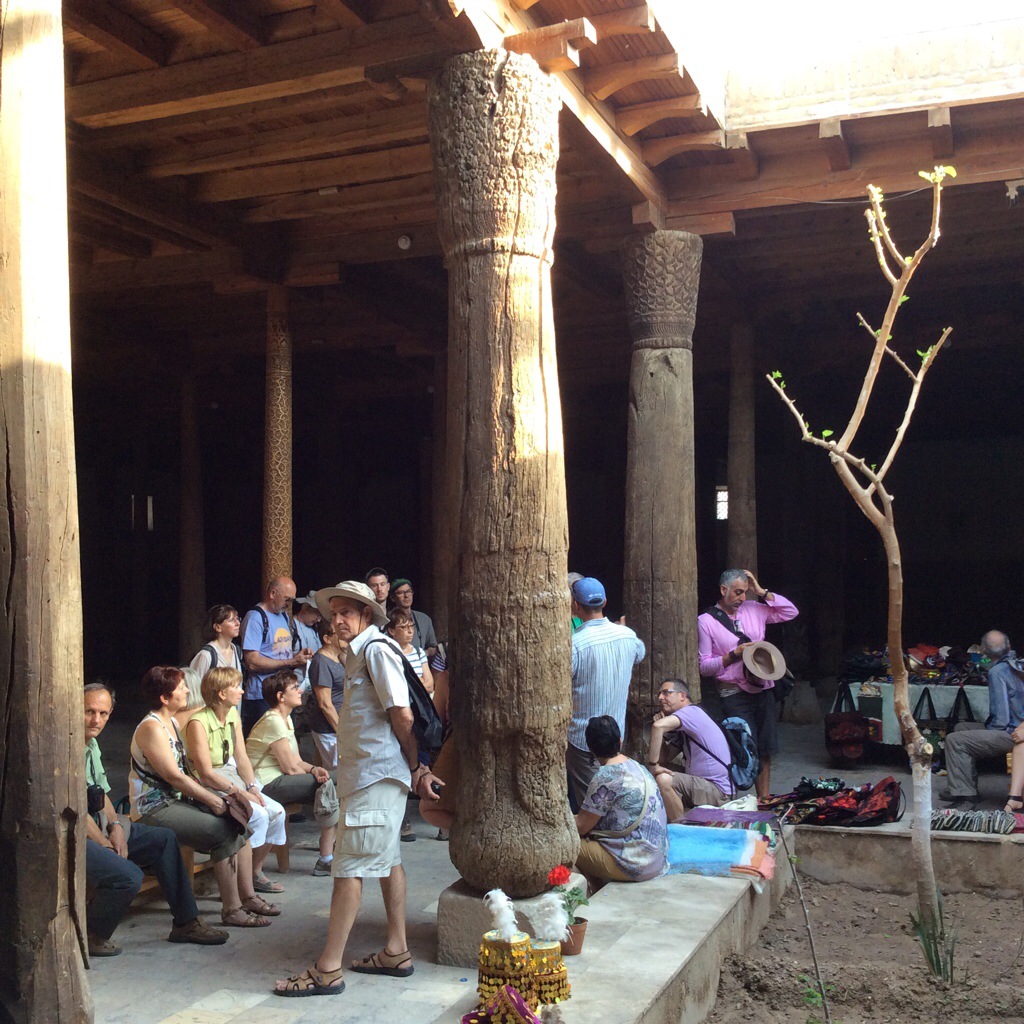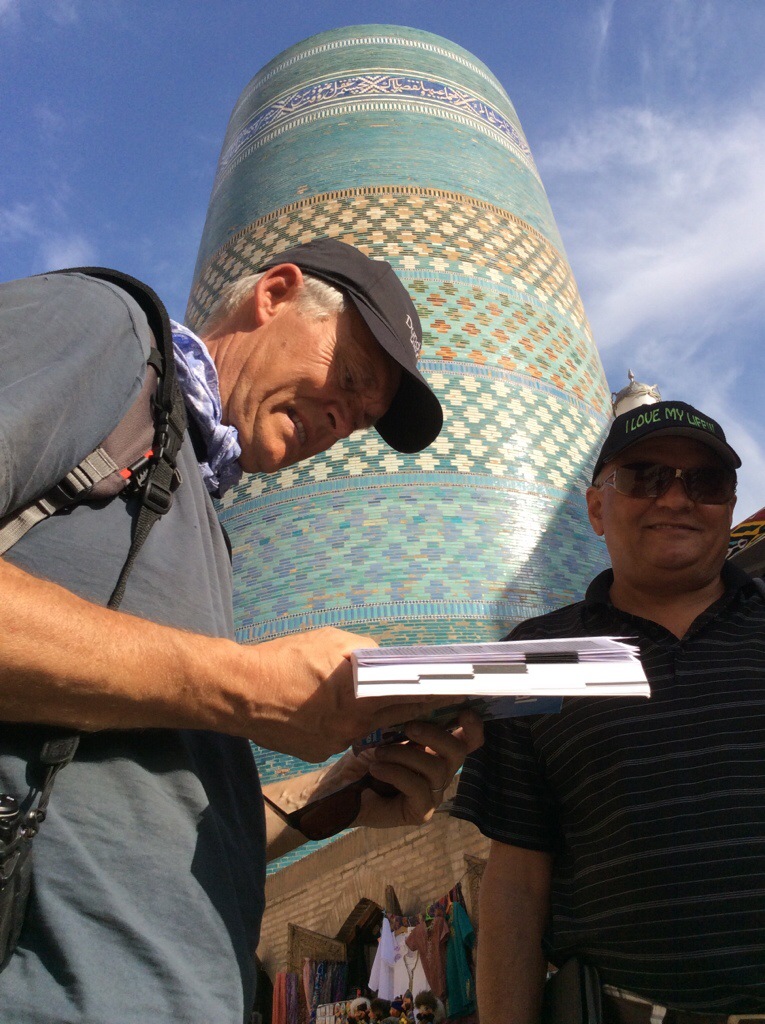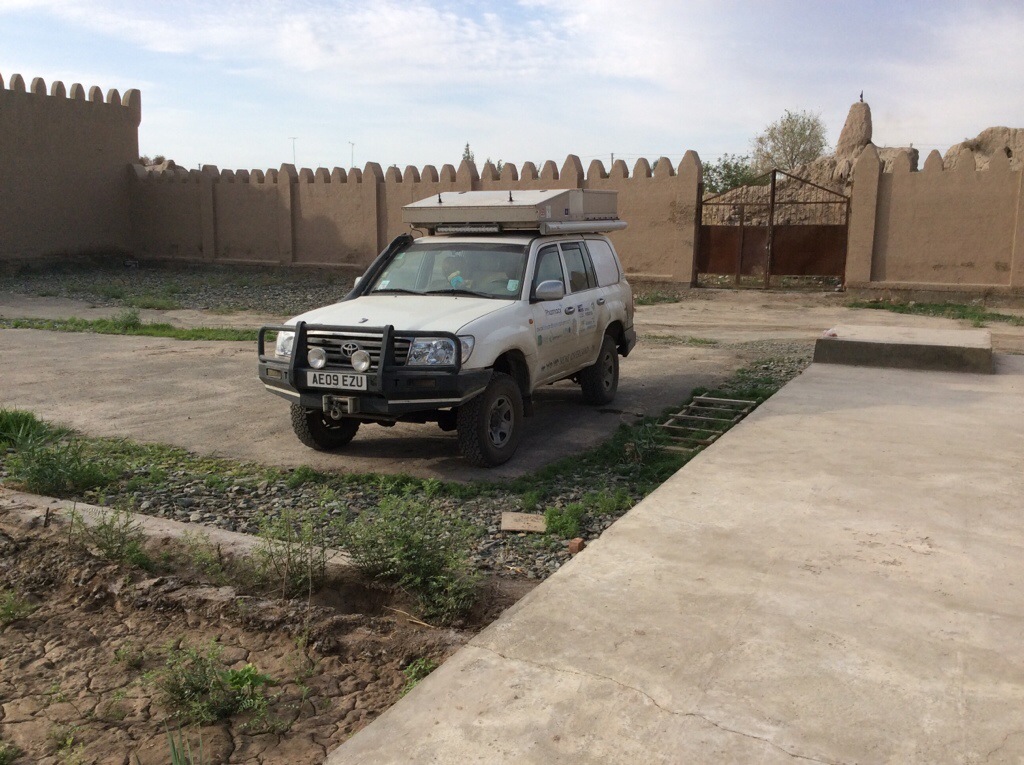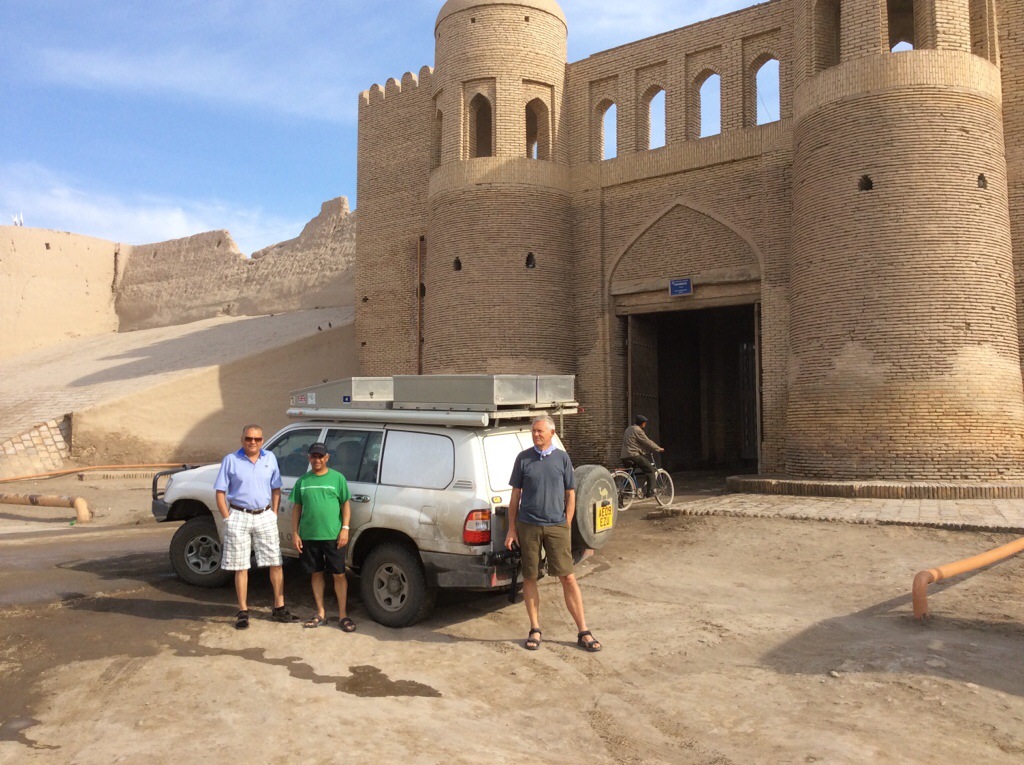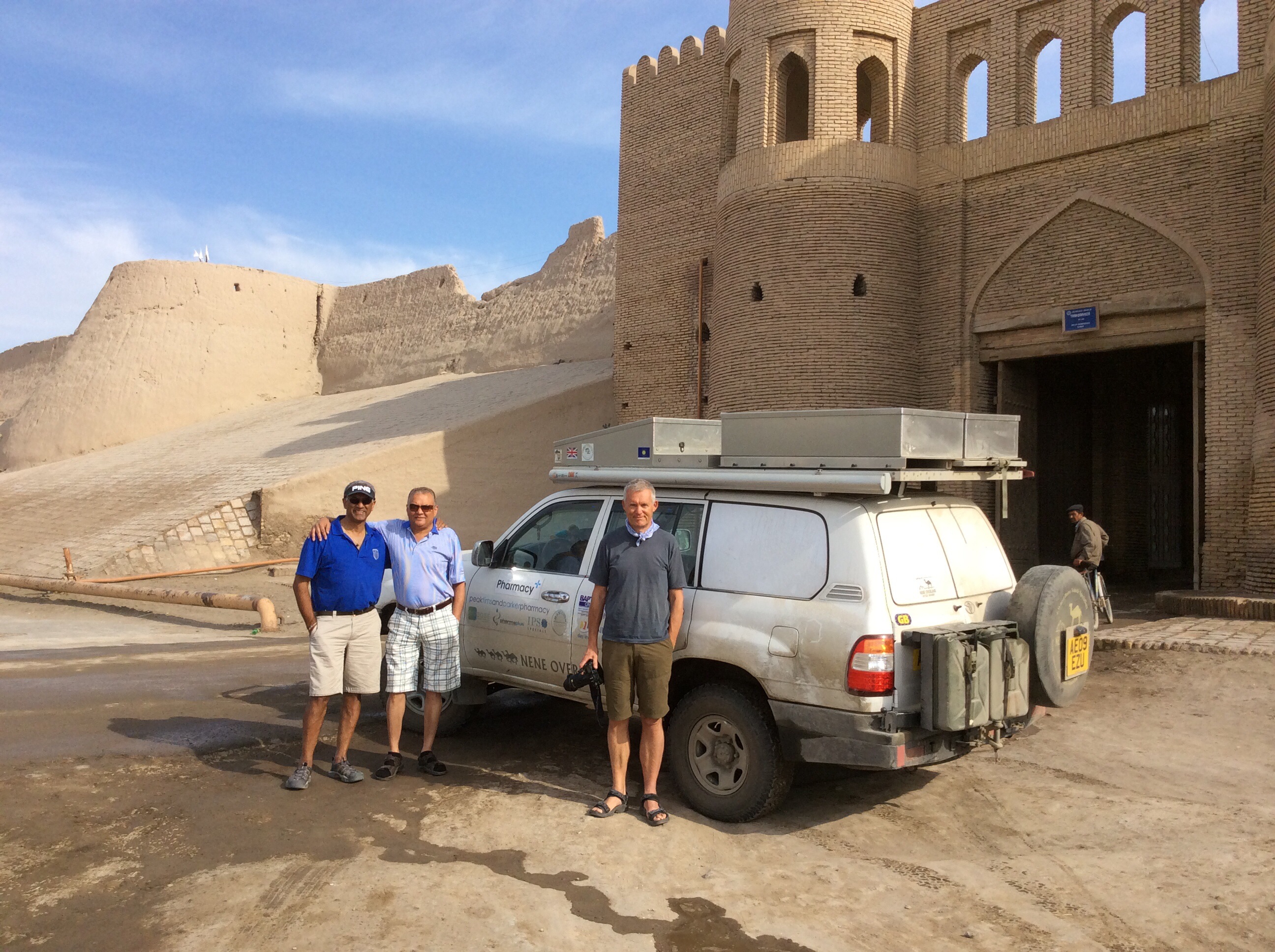22nd day Sat 3rd May
Left Nukus at about 11.30am for Khiva via Urgench and ancient Khorezm.Going to be a pretty light relaxing day.Started to see the terrain starting to change on this short journey today,can start to see mountains and a subtle change in the greenery.much more pleasant to the eye
Tomorrow want to reach Bukhara ( then Samarkand and Tashkent , thereafter making our way out of Uzbekistan and into Kyrgyzstan)
It was also very noticeable the change in the way ladies dressed – salver chemise type,very symmetrical features and very well dressed
KHIVA – additional information – First Ancient Town we have visited
A very interesting place
I found it to be a very sleepy town,with young population.Did not see one single dog ,stray or otherwise !
In the early part of its history, the inhabitants of the area were from Iranian stock and spoke an Eastern Iranian language called Khwarezmian. Subsequently the Iranian ruling class was replaced by Turks in the 10th century A.D, and the region gradually tuned into an area with a majority of Turkic speakers.
The city of Khiva was first recorded by Muslim travellers in the 10th century, although archaeologists assert that the city has existed since the 6th century. By the early 17th century, Khiva had become the capital of the Khanate of Khiva, ruled by a branch of the Astrakhans, a Genghisid dynasty.Khiva is an important and often overlooked historical site on what was once a small trading post on the GREAT SILK ROAD.Famous for its long and brutal history as a slave trading post
In 1873, Russian General Von Kaufman launched an attack on the city, which fell on 28 May 1873. Although the Russian Empire now controlled the Khanate, it nominally allowed Khiva to remain as a quasi-independent protectorate.
Khiva is split into two parts. The outer town, called Dichan Kala, was formerly protected by a wall with 11 gates. The inner town, or Itchan Kala, is encircled by brick walls, whose foundations are believed to have been laid in the 10th century. Present-day crenellated walls date back to the late 17th century and attain the height of 10 meters.
The LARGE BLUE TOWER in the central city square was supposed to be a minaret, but the Khan died and the succeeding Khan did not complete it.Construction was thus halted and the minaret remains unfinished to this day.
The old town retains more than 50 historic monuments and 250 old houses, mostly dating from the 18th or the 19th centuries. Djuma Mosque, for instance, was established in the 10th century and rebuilt in 1788-89, although its celebrated HYPOSTYLE HALL still retains 112 columns taken from ancient structures.
Khiva was recognised as a World Heritage Site by UNESCO in 1990